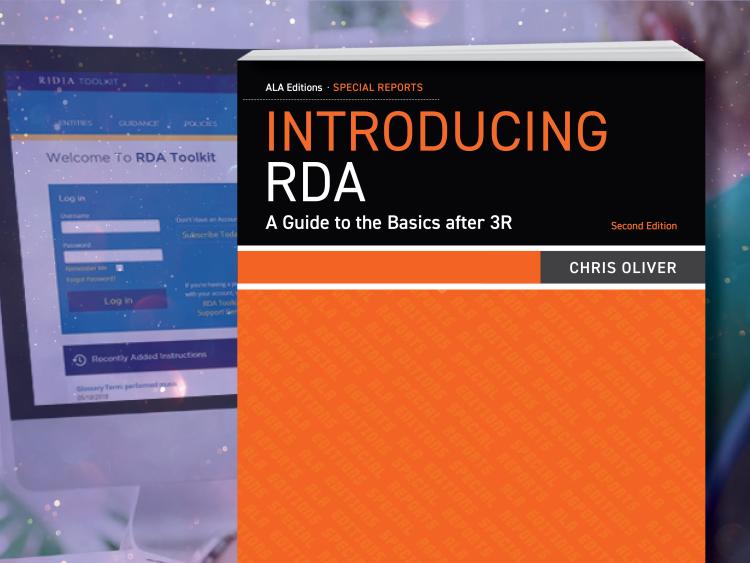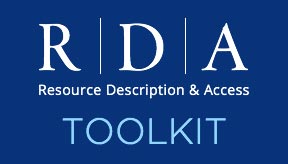Interview with Chris Oliver on new book Introduction to RDA

Now available for purchase on the ALA Store website, Introduction to RDA: A Guide to the Basics after 3R, Second Edition is Christine Oliver’s primer guide to the RDA cataloging standard for library and information science students, records managers, catalogers, and other library professionals. The new print book specifically covers the changes to RDA reflected in the official RDA Toolkit launched on December 15th.
Earlier this month, ALA Digital Reference interviewed Christine Oliver about the revised RDA and resources that catalogers can use to build their command of it. The complete interview follows.
ALA: With the completion of the 3R Project, RDA is now aligned with the Library Reference Model. Why is this important for catalogers?
CO: The validity of our cataloguing standard. The minute IFLA LRM was approved in 2017, it made FRBR, FRAD and FRSAD obsolete. You can’t have an international standard aligned with obsolete conceptual models. It was imperative for RDA to align itself with the current, valid and internationally accepted model, IFLA LRM.
IFLA LRM consolidates the three FR models but IFLA LRM goes beyond simple consolidation. The modelling has also evolved. For example, IFLA LRM provides for a more nuanced understanding of difficult areas such as aggregates and serials. By aligning with IFLA LRM, we also inherit a more developed understanding of the bibliographic universe.
ALA: Many of the changes introduced in the 3R Project were made to support RDA’s goal to be an international standard. How does this attention to internationalization benefit the cataloging profession?
CO: RDA was intentionally designed to support internationalization, as can be seen in the Objectives and Principles section of the standard. The wording in RDA for this objective reminds us that “the emphasis is on data harmonization.”
The goal of internationalization is to encourage and facilitate adoption by cataloguing and metadata communities around the globe, communities working in a range of different technological environments and coming out of diverse cataloguing traditions. The focus is on what we share rather than on our differences. So, the focus of RDA is on a shared understanding of the structure of our data, derived directly from IFLA LRM, and on a shared element set based on this structure. As a cataloguer, I am linked to my colleagues around the globe as we work each day to produce bibliographic data that can interoperate when a user performs a search.
There is a benefit both for the cataloguer and for the audience for whom we catalogue. Those who use bibliographic data benefit when there is a high level of data interoperability between communities. They benefit when they have a seamless experience as they explore, find, identify, and select what they need.
ALA: What do you like best about changes introduced in the 3R Project? Is there a change that you think will be particularly advantageous to catalogers?
CO: At first, the new RDA Toolkit seems so different. As I got to know it, I really appreciated the new look and structure. Being an IFLA LRM fan, I really like the way all the data elements are organized by entity. I love the element search at the bottom of each entity page. It is a great way to see all the elements that describe each entity. I like the consistent presentation of 4 recording methods, even if one, two or three may not be applicable for that data element. The consistent list of the 4 methods reinforces that a) there is more than one way to describe a resource, and b) that we are working with a standard designed to accommodate a range of different technological environments. It reflects the reality that cataloguing communities around the globe operate in different contexts.
I think one of the first things that cataloguers may find advantageous is the new modular design. The basic building block is the data element, and the page for each data element brings together all the necessary information in one place – definition and scope, element reference information that includes useful technical information, including mappings to MARC 21, all the instructions, examples, and links to related elements. For those who rely on policy statements in their daily work, I imagine that they will greatly appreciate the option to display policy statements in parallel with the RDA instructions. They will be able to choose their default policy statements and then see the instruction and the relevant policy statement in parallel on the same screen.
ALA: As institutions evaluate the revised RDA and begin thinking about transitioning to the new guidance, what do you think will be the biggest challenge for them, and how might they address that challenge?
CO: RDA in the new RDA Toolkit is organized differently than in the original Toolkit. So, the main challenge is becoming familiar with the new structure and the new modular design. But there are many ways to navigate and search. There are great free demos that include guidance about navigation and search. The design is also reasonably intuitive so that just exploring and experimenting can lead to familiarity.
I think that a big help is access to both the original RDA Toolkit and the new RDA Toolkit during the transition period. It gives everyone the time to explore and become familiar with the new RDA Toolkit. And flipping back and forth between the old and the new Toolkits also helps one appreciate the improvements.
ALA: In what ways do you think your book can help catalogers?
CO: I hope my book can act as an introduction to the main areas of change and explain why the changes have occurred. It provides background and context illustrating how RDA and our use of RDA have evolved. It is not a training manual. It is a guide to RDA in the new RDA Toolkit.
ALA: Are there other resources you recommend for those facing this transition?
CO: I have always found the presentations on the RSC website very useful. In fact, I reference them several times throughout my book. I also love the RDA Toolkit’s YouTube channel. My department has a group registration for the RDA Lab Series and I am looking forward to attending this series. We’ll also be seeing second editions of some of the great classics like RDA Essentials and Maxwell’s Handbook and these should be a great help.
